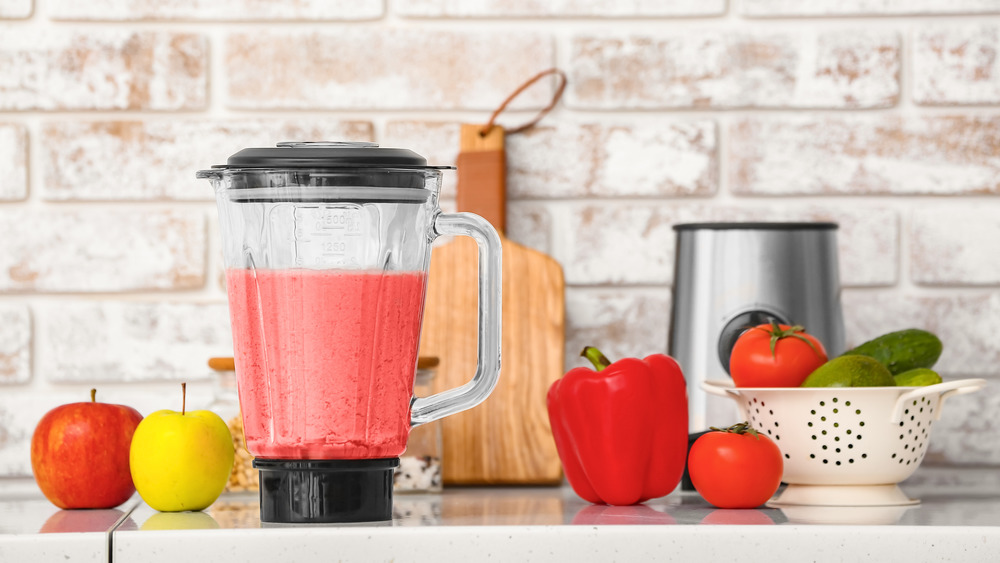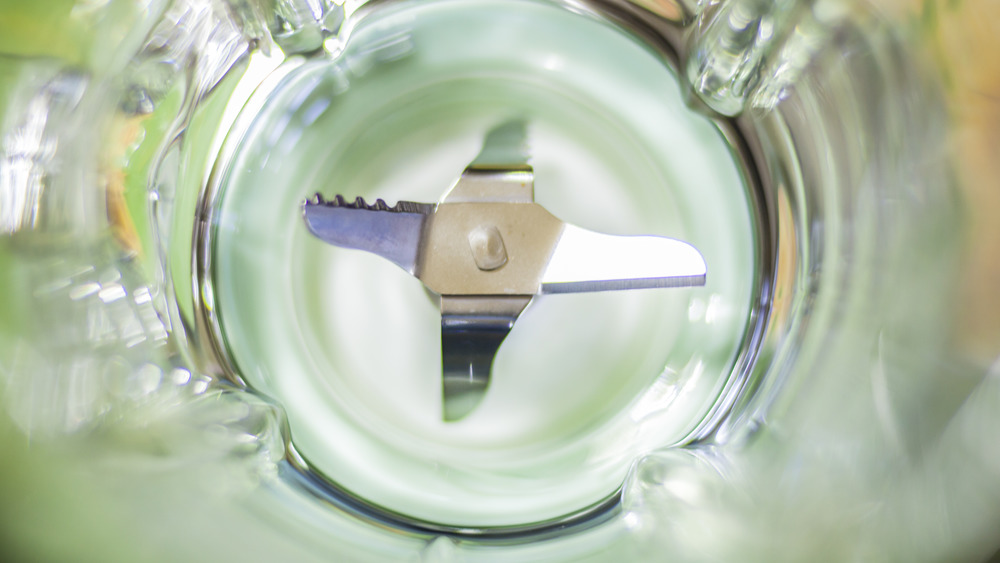Don't Make These Common Blender Mistakes
You may think you know how to use a blender, that it's a matter of placing A into B and pushing a button, that there's no nuance, know-how, or technique! Think again, friend, because you've probably been doing it wrong your whole life. With these tips, your experience mechanically smoothing items will never be the same again. But first thing's first: invest in a good blender (via Eat This Not That). You don't have to shell out hundreds of dollars for the queen of blenders, but do your homework. Eat This, Not That quotes a senior editor for Cooks' Country Magazine that recommends a $100 KitchenAid version. A good blender won't break the bank, and you'll have a machine that lasts, plus evenly blended smoothies.
Here's where to maximize your blender results: Don't use whole items. Cutting up your ingredients, whether it's tomatoes for a salsa or carrots for a soup, makes things easier for your blender (via Eat This, Not That). Next, follow the right order of operations. "Pouring liquids in first allows the blades to move easily when you turn the machine on," Tess Masters, author of The Blender Girl, told Eat This, Not That, "Add powdered ingredients next so they don't stick to the lid, then pile on soft foods, like bananas and cucumbers, followed by hard foods, such as frozen fruits and raw vegetables." Liquid, powder, leaves, soft, then hard (via Vitamix).
Don't make these common blender mistakes
Another important thing to keep in mind: don't overfill the blender. Some space between the lid and the liquid line is good for averting splash disasters, especially for hot items, which can build up steam and cause the lid to come off during blending (via Eat This, Not That). Also, don't rev up the blender like a race-car driver going from zero to 100. Firstly, calm down, you're blending nut milk. Second, starting slow and easing your way up to a high blender setting is easier on the motor, and it will also ensure there are no big splashes at the beginning.
You might also be overlooking the many unexpected uses for a blender, whether it's whipped cream, nut butter, oat flour (or any kind of flour), and face masks — yes, face masks (via Eat This, Not That). Blending flours and spices is better with a dry blending container, but the regular blades will do in a pinch (via Kitchn). Here's another hack for when all that blending is over: there's no need to lug the attachment to the sink and dig in with a sponge — simply put a few drops of dish soap into the container, fill two-thirds of the way with water, and blend away! Rinse it out, and you have a squeaky clean appliance (via Eat This, Not That). Blenders really can do it all.

